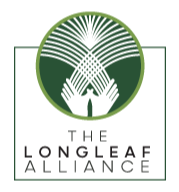Videos and Webinars
Below you can find conservation and working lands videos and webinars developed by our partners. These webinars are meant for a wide range of audiences — from technical experts and practitioners to landowners and the public.
The 5 Principles of Soil Health
Presented by Tony Richards, a conservation planner in Tremonton, UT.
Voices of African American Forestry
This short video captures the insights and reflections on past and present issues as well as the future aspirations for African American forestry and land retention. Featuring interviews with African American forest owners in the Southeastern Black Belt who are part of the Sustainable Forestry and African American Land Retention Network (SFLR).
America's Forests in South Carolina - Sustainable Forestry and African American Land Retention Network
This episode of America's Forests with Chuck Leavell in South Carolina features African American landowners and foresters and The Sustainable Forestry and African American Land Retention Network, a program of the U.S. Endowment for Forestry and Communities.
Woods for Wildlife: Native Plants of the Longleaf Pine Forest and Active Management of Early Successional Plant Communities
Learn about the high diversity of plant species in the longleaf pine ecosystem and how to actively manage land to preserve this diversity. The presenters discuss how to maximize wildlife management goals through active management of early successional plant communities. Commonly referred to as early successional habitat, these plant communities benefit a vast array of wildlife species including the northern bobwhite quail, monarch butterfly, and red-cockaded woodpecker.
Virtual tour: Native Warm Season Grass Grazing
Join a tour of pasture lands that use native warm season grasses to provide good grazing for livestock and invaluable habitat, food, and shelter for native wildlife. The video highlights the benefits of different native grasses and how quickly these grasses can benefit working lands. Developed and provided by Ohio NRCS, Ohio State University Extension, the Madison Soil and Water Conservation District, and Quail/Pheasants Forever. Released September 2020.
Native Grass College: Video series
The Native Grass College offers short videos and resources for practitioner and landowners to learn how to 1) Establish Native Grasses, 2) Control Grass Competition, and 3) Manage grazing. Native grasses are better for grazing and for wildlife. Developed by Dr. Pat Keyser, Center for Native Grasslands Management at the University of Tennessee.
Producer Adoption of Native Grass Forages
Pat Keyser (Center for Native Grasslands, University of Tennessee) describes opportunities for practitioners to better partner with livestock producers to adopt native grass forages and advance working lands conservation. What is good for the cows is good for native species too. This webinar was presented as part of the Mississippi Flyway Summit in September 2020.
AMJV Timber Harvest Virtual Tours
These 360° Virtual Tour videos from Appalachian Mountains Joint Venture partners show different timber harvest techniques and their outcomes. Simply click and drag within the video to look around as you learn about different management techniques such as shelterwood harvests, overstory removals, and midstory removals that benefit many wildlife species including the Golden-winged Warbler. Includes 5 total videos.
Golden-winged Warbler Ecology and Guidelines for Creating Breeding Habitat Presentation
Presented by Jeff Larkin, Ph.D., Indiana University of Pennsylvania, and Marja Bakermans, Ph.D., Postdoctoral Researcher, Indiana University of Pennsylvania The Golden-winged Warbler is a neo-tropical migrant that breeds in early successional habitats of North America. This imperiled songbird has experienced a 90%+ population decline in the Appalachian region over the past 50 years. The U.S. Fish and Wildlife Service is currently considering listing this species under the Endangered Species Act. The recent completion of a study in portions of Pennsylvania and Maryland provided the foundation of a Golden-winged Warbler Forestland BMP publication. These BMP's have potential for implementation through Farm Bill programs on private lands. Learn more by viewing this webinar. The opinions expressed in this video are those of the presenter(s) and do not necessarily reflect the opinion of USDA.
More Quail Per Bale: Precision Conservation for a More Sustainable Future
How farming and quail management can be compatible on working lands.
Regenerative Agriculture: No-Till Farming
Gabe Brown, legendary Rancher from Bismarck, North Dakota, discusses how Regenerative Agriculture is a solution to local and global challenges.
Native plants and bobwhites
Why are native plants so vital to bobwhites? TJ Savereno of Clemson Extension answers this question and gives a solid introduction to each type of plant and where its value lies. He also covers the proper mix of each type for your property.
Q&A Session: Bridgett Costanzo, Dr. Jessica McGuire & Dr. James Martin
Question & Answer session at the end of the WLFW Northern Bobwhite, Grasslands and Savannas Partnership Meeting. February 24th, 2021.
Perspectives & Tips on Field Delivery of WLFW-NOBO: Dr. Jessica McGuire
Dr. Jessica McGuire presenting at the WLFW Northern Bobwhite, Grassland and Savannas National Partnership Meeting. February 24th, 2021. Jessica is the Quail Forever National Coordinator for WLFW NOBO.
Northern Bobwhite Trends and Landscape Needs: Dr. James Martin
Dr. James Martin speaking at the WLFW Northern Bobwhite, Grasslands and Savannas National Partnership Meeting. February 24, 2021. James is an Associate Professor at the University of Georgia.
Progress, Goal-Setting Spreadsheet, & Next Steps: Bridgett Costanzo
Bridgett Costanzo presenting at the WLFW Northern Bobwhite, Grasslands and Savannas National Partnership Meeting. February 24, 2021. Bridgett is the Regional Coordinator for WLFW, NRCS
Forest Certification and Quail Conservation: What’s the Intersection?: Paul Trianosky
Paul Trianosky speaking at the WLFW Northern Bobwhite, Grasslands and Savannas National Partnership Meeting. February 23, 2021. Paul is the Chief Conservation Officer at Sustainable Forestry Initiative.
Partnerships Help Profitability, Sustainability in Cotton Farming: Dr. Jesse Daystar
Dr. Jesse Daystar speaks at the WLFW Northern Bobwhite, Grasslands and Savannas National Partnership Meeting. February 23, 2021. Jesse is the Chief Sustainability Officer at Cotton Incorporated.

























